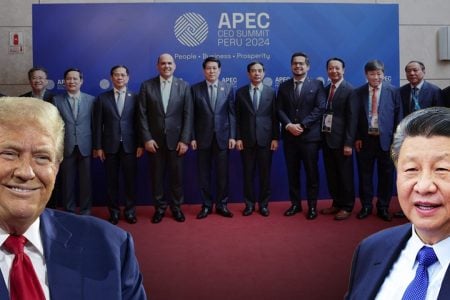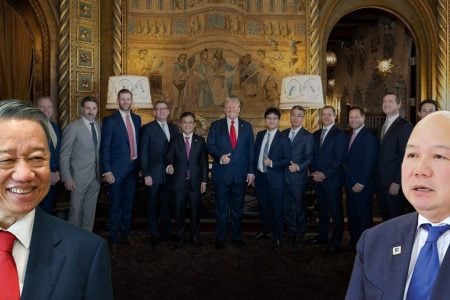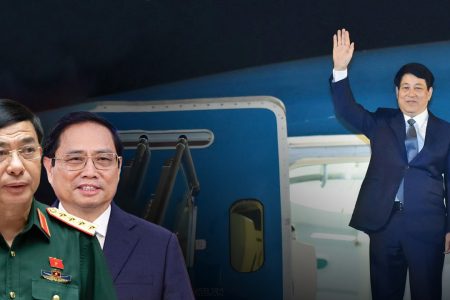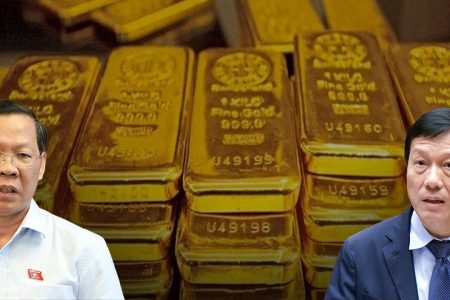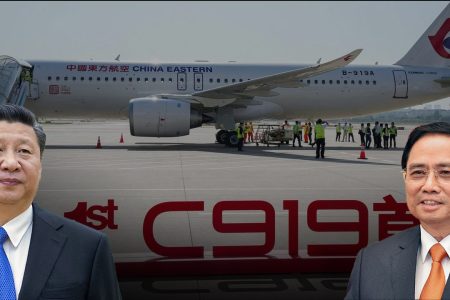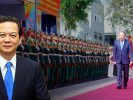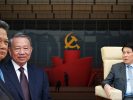China’s administrative declarations and decisions, as well as legal actions on the so-called “Sansha City” and assertive actions in the field, have marked the strengthening of its claim of four groups of islands and reefs as Beijing’s new strategy to accelerate its hegemony of the South China Sea in the context of the Covid-19 pandemic is raging globally and China is facing deadlock at home and abroad.
On April 18, China’s Ministry of Civil Affairs issued a statement that the State Council of China recently approved a decision to establish „Xisha District“ and „Nansha District“ under „Sansha City“ under Hainan province.
These are declared administrative units at the Hoang Sa (Paracels) and the Truong Sa (Spratlys) claimed by Vietnam under international law.
Under the administrative responsibility set by China itself, Xisha District manages the Paracels and Macclesfield (known as Zhongsha) and surrounding waters. The government of Xisha District is located on Phu Lam (Woody) Island.
And the Nansha District manages the Spratlys and the surrounding sea. The government of Nansha District is located in Cross Rock which China overtook from Vietnam in 1988.
The called the „Sansha City“ is the „administrative unit“ that China blatantly established in 2012 to manage „Xisha, Zhongsha and Nansha.“
Subsequently, on April 19, the Chinese Ministry of Civil Affairs expressed its opposition to arbitrarily announcing the so-called “standard title” of dozens of islands and shallow beaches in the South China Sea, including deep-lying entities within the exclusive economic zone of Vietnam.
The Global Times of the Communist Party of China said the „standard names“ published on April 19 will apply to „25 islands, rocks and 55 undersea geographical features in the South China Sea.“
In addition to arbitrarily naming these features, China also declares the longitude and latitude of islands, rocky beaches and features. Many of these rocky islands and features appear in the western part of the South China Sea and lie along the „cow’s tongue line“ drawn by China itself.
This inadvertently helps experts determine the exact location of the islands, rocks and entities that China contradicts claim to be under their jurisdiction.
Notably, among these entities, there are shoals located deep within the exclusive economic zone of Vietnam, only less than 60 nautical miles from the Vietnamese coast or about 50 nautical miles from the Vietnamese baseline.
Along with that, China has recently dispatched exploration ships and coast guards vesselss to the South China Sea, conducted naval exercises in the regional waters, the appearance of naval ships in the Taiwan Strait, even made moves in the East China Sea, near Japan.
This series of serious law violations are being carried out in the context that the whole world is still struggling against the Covid-19 pandemic as China is also facing pressure from both inside and outside.
Dr. Nguyen Thanh Trung, director of the Center for International Studies – Ho Chi Minh City University of Social Sciences and Humanities said: “The United Nations Security Council has 5 standing countries, all 4 countries (UK) , France, USA, Russia) are busy dealing with Covod-19 pandemics. China – the remaining member – is taking advantage of the distractions of countries and UN agencies that are focusing on fighting pandemics to promote claims in the South China Sea.”
China has a history of leveraging crises to take advantage of its strategic intentions. For example, during the Vietnam War ended in 1974, China attacked and appropriated illegally the Paracels from Vietnam. Similarly, after the Philippines ordered the US to close garrison forces in Subic Bay and Clark Air Force Base in the early 1990s, China took the opportunity to seize Mischief Reef from the Philippines (in early 1995).
As such, China has taken the opportunity to strengthen its control over the region in the context of other countries being attacked by the COVID-19 pandemic, which originated from China.
In addition, Dr. Nguyen Ngoc Truong, former ambassador of Vietnam to Sweden, senior advisor of the Center for Strategic Studies and International Relations Development (CSSD) commented that China made such a statement. At this time, there are many reasons, stemming from domestic difficulties, forcing China to push the conflict outward to drive the attention of the public.
He said: “China is facing many difficulties after the COVID-19 pandemic. The economy is stagnant, growth is slow, people’s lives go down, especially unemployment rises. These are the problems faced by Chinese leaders. These have prompted China to push internal conflicts outward, thereby driving domestic public attention and attracting the international community. Therefore, the issue of the South China Sea and Taiwan are the priorities for China to realize its intention.“
With the failure of the „cow’s tongue line“ claim after the decision of the International Court of Arbitration (PCA), China launched a new strategy in the South China Sea in 2017 with the wrong „Sansha“ claim. And recent administrative claims are one of the steps to fulfill this claim.

China is taking the institutionalization of the so-called „Sansha“ in the national management system, a new step to implement the scheme to monopolize the South China Sea.
This claim can be summarized by 3 points. First, China has an „indisputable sovereignty“ over the South China Sea, including 4 groups of islands that China calls „archipelagos„: Dong Sa (Pratas Rock Island), Xisha (Vietnam’s Hoang Sa or Paracels), Nansha (Vietnam’s Truong Sa or Spratlys and Scarborough of the Philippines. Second, these island groups are archipelagoes and are used straight baselines to define baselines and archipelago waters. Third, these island groups have archipelago waters, territorial waters, exclusive economic zone (EEZ) of 200 nautical miles and continental shelf calculated from the straight baseline.
It should be noted that from about the second half of 2019 to now, China has given the HD 8 ship to explore resources in EEZ and continental shelf of Vietnam, Malaysia, Brunei and the Philippines. Politically and economically, China has always used its power to impose countries around the South China Sea to force them to accept its illegal claims. China has also aggressively deployed ships to conduct exercises on regional waters. As such, China is implementing all political, military, diplomatic, state administrative and field measures to realize its wrong claims in the South China Sea.
Professor James Kraska, an international maritime law expert at Stockton International Law Center (US Naval University), said: “I think the Beijing government wants to assert the so-called Sansha City which occupies an area of over 2 million square kilometers, the largest city on Earth and is bigger than many countries.”
Experts also assess that escalating tensions in the South China Sea is also a solution for China to put pressure on the Code of Conduct (COC) negotiations in the South China Sea.
China’s creation of two additional „administrative units“ in Hoang Sa and Truong Sa (under Vietnam’s sovereignty) is an act of provocation, disobeying international law, which violates the Declaration of on the South China Sea (DOC) and seriously weaken the negotiations between China and the countries of the Association of Southeast Asian Nations (ASEAN) on the issue of moving towards a binding (COC) legal side.
Professor Carl Thayer (University of New South Wales, Australia) affirmed that China has made the following mistakes.
First, China’s action is provocative because it contradicts the spirit of a document between Vietnam and China on the Agreement on the basic principles guiding the settlement of the issue at sea, which was signed by the two ruling communists from the two countries agreed in October 2011. China’s actions will undermine trust between the two countries, as it repeatedly violates Beijing’s commitments that it will resolve disputes peacefully, through dialogue with countries of direct concern.
Second, China’s actions are illegal under international law. China controlled the Paracels through invasion and annexation in January 1974. International law does not recognize sovereignty acquired through invasion.
Third, China and ASEAN agreed on the DOC in 2002. Article 5 of the DOC states: „The parties commit themselves to self-restraint in activities that will complicate the situation, escalate tensions and affect peace…“ Unilateral action of China has made the situation seriously complicated for disputes and affecting peace and stability in the South China Sea. The Chinese government will issue regulations and directives that will greatly affect Vietnam’s sovereignty and jurisdiction.
Fourth, the text of the COC negotiation does not specify which areas in the South China Sea the COC will cover. China’s announcement of the new „administrative unit“ in Spratlys is a preemptive move to repel the claims of Vietnam and the Philippines.
In this context, Vietnam and other countries in the region and related parties must be very cautious to use diplomatic means to openly oppose illegal claims of China.
Dr. Tran Cong Truc (former head of the Government Border Committee) affirmed: “We need to formally protest against China’s actions, from the establishment of“ administrative units „to the naming. At the same time, Vietnam should consider publishing its own names to the islands, rocks and geographic structures in the South China Sea.“
Master Pham Ngoc Minh Trang (Lecturer of Faculty of International Relations, University of Social Sciences and Humanities, Ho Chi Minh City) also said: “It is best to remain calm, cautious and use diplomatic measures. such as handing out diplomatic notes or direct objections, or taking the matter to international forums, most importantly the United Nations. China not only has made Vietnam anger but also other countries in the ASEAN, so this is the time when these countries have a „common ground“ to cooperate in coping with Beijing. As the president of ASEAN, Vietnam is now in an active position to gather a common voice to condemn China’s illegal acts which threaten security and peace in the South China Sea. As a current non-permanent member of the UN Security Council, Vietnam should act to protect its sovereingty in the South China Sea.”
Dr. Nguyen Thanh Trung (director of the Center for International Studies, University of Social Sciences and Humanities, Ho Chi Minh City) also said: “Vietnam’s reputation is rising in the world after the actions providing medical supplies for countries fighting COVID-19. Vietnam needs to use this to promote communication to the world, proving legal sovereignty over the Paracels and Spratlys. If China submits any documents related to the South China Sea to the UN, Vietnam will also submit a counter argument. If China arbitrarily names the entities in the South China Sea, Vietnam must also tell the world what the Paracels and Spratlys.
Despite international reactions, China continues to disseminate unfounded sovereignty claims and argue as if it is a victim of non-compliance with international law.

On April 17, in a document submitted to the United Nations, China blatantly accused Vietnam of bringing military and illegally occupying islands and rocks belonging to China’s Nansha Islands.
The document submitted by the Chinese delegation at the United Nations also emphasized that Beijing had repeatedly „protested against Vietnam’s aggression and illegal occupation“ before shouting „asking Vietnam to withdraw all crews and facilities off islands and rocks invaded and occupied illegally.”
In fact, China always says one thing and does another. In the April 17 text, Beijing did not even shy away and changed its history.
China is the only country to use force to control and illegally occupy islands and rocks in the South China Sea. Among them is the battle on March 14, 1988, China sent warships to capture Gac Ma, Co Lin and Len Dao rocks in the Spratlys, killing 64 Vietnamese soldiers.
Despite Vietnam’s strong resistance and fierce opposition, China illegally occupied Gac Ma. In 2014, China blatantly transformed Gac Ma into an artificial island and turned it into a military outpost serving its ridiculous sovereignty claims over the South China Sea.
China’s string of behaviors at sea, accompanied by scandals related to the COVID-19 pandemic, has weakened the confidence of the international community in Beijing. There is no shortage of criticism to target Chinese leaders over time. The creation of island districts accompanied by drastic acts in the field will make the countries to react strongly.
Dr. Tran Cong Truc – former head of the Government Border Committee affirmed: Solidarity is always the champion strength that must be maintained and promoted in every country, in the regional and international community. China cannot realize its desire to take full control in South China Sea.
And Vietnam must also urgently convert to a democratic institution to ally with the US and Europe, preparing for the worst case scenario, when a war in the South China Sea with China is in the near future.
Hoang Lan from Hanoi – Thoibao.de (Translated)










